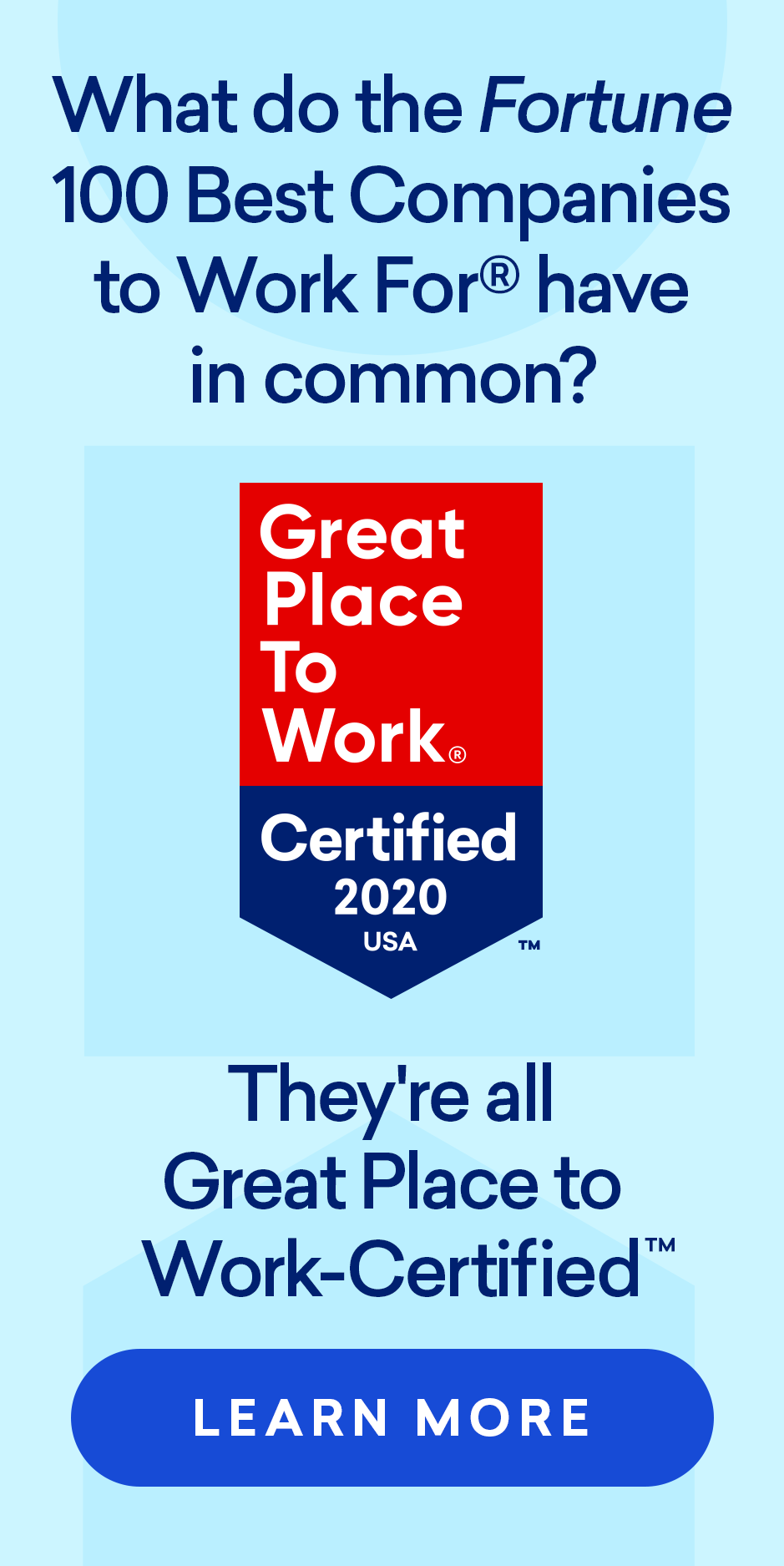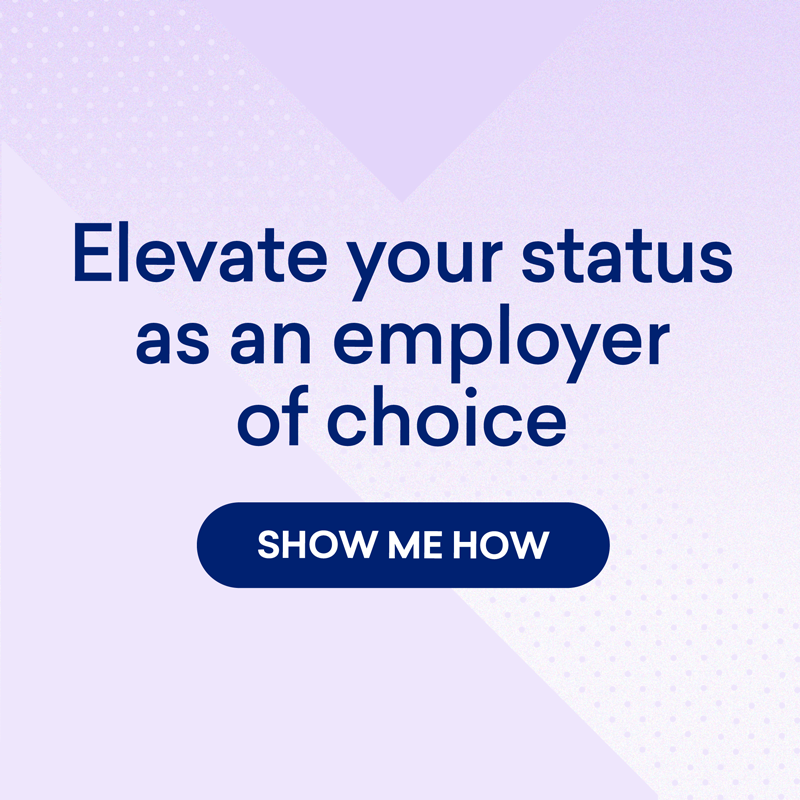Lessons from the 2016 Fortune 100 Best Companies to Work For®, through the Eyes of a Millennial
Building a high-trust culture should be on the mind of every business leader as findings released by Great Place to Work® reveal the close connection between high-trust organizational cultures and voluntary employee turnover. Organizations featured on the 2016 Fortune 100 Best Companies to Work For® list have a voluntary turnover rate half that of industry peers. So, what are these organizations doing differently?
The report by Great Place to Work®, Connecting People and Purpose: 7 Ways High-Trust Organizations Retain Talent, identified seven distinct ways organizations are building high-trust cultures.
- Define your company's purpose and connect people to it.
- Trust and empower employees to do their job.
- Give employees a voice.
- Showcase the customer.
- Make your workplace a community.
- Recognize employees' contributions.
- Make "giving back" part of your brand.
I realize this may seem like a list of feel-good ideas. Why do organizations need to bring purpose to employees' lives—employees get paid a fair salary, right? Also, why are trust and empowerment important and is it really necessary to make the workplace a community?
For starters, an average person spends 37 percent of their day at work (roughly 8.9 hours) according to the Bureau of Labor Statistics. As a Millennial, I do think of work as a percentage of my day, so why would I spend nearly half my day working somewhere that doesn't make me happy or bring purpose to my life? After all, the motto of our generation is YOLO (you only live once)! Our parents and grandparents might roll their eyes, but for Millennials and Generation Z, this is a question we ask ourselves quite often. We seek out jobs that bring purpose to our lives and organizations that share our values. As we begin to fill the workforce, we are bringing with us a strong affinity for diversity, relationship-building, and making a positive social impact.
Second, Millennials and Generation Z are entrepreneurial. This is great news for organizations since Millennial and Generation Z employees will be proactive, innovative, and intent on solving society's greatest challenges. But entrepreneurial personalities require work environments that provide freedom and flexibility. More importantly, they require opportunities to pursue new ideas despite the risk of failure. The success of this new workplace ecosystem hinges on the ability of management to turn over some power and control to employees—a key tenet in building trust. It appears, at least for the 100 Best Companies to Work For®, that when organizations give employees trust, employees give it back tenfold.
Lastly, why should organizations turn the workplace into a community? Google, during its quest to build the perfect team, made a discovery I think everyone always knew but Google quantitatively proved: "no one wants to put a 'work face' on when they get to the office." The younger generations are used to sharing—sharing vacation pictures on Instagram, sharing pet and baby pictures on Facebook, and sharing rants on Twitter. All of the sudden, the clock strikes 9:00 a.m. and we can't share anymore? Our two worlds—work and home—converge, unreconciled. Google also discovered that teams filled with members who share personal information with one another slowly create psychological safety which turns out to be the most important trait of high-performing teams. Psychological safety fosters "conversational turn-talking and empathy" within teams, making it much easier and more comfortable for team members to have difficult and honest discussions about projects—what's working, what's not working, that's not a great idea, or this idea could be so much better. Teams that debate and disagree are much more successful because they predict and avoid product failure, uncover and improve design flaws, and push each other's limits and ideas enabling them to surpass the competition.
So, I hope all business leaders read about the seven ways that the 2016 Fortune 100 Best Companies to Work For® are building high-trust cultures. Ignoring voluntary turnover and the underlying causes will be expensive, but will cost organizations more than hard dollars—they may cost your organization the next cutting-edge idea or disruptive technology.
Follow me on twitter: @haleyc_APQC. I will be attending and blogging about the upcoming Great Place to Work® Conference. The Great Place to Work® Conference is a premier event, where executives from around the country convene to network and learn from leaders at recognized Best Companies to Work For. Attendees get a chance to hear what these companies are doing to create and sustain a great workplace culture.
Stay up-to-date with APQC's upcoming research, webinars, and more by visiting the HCM expertise page.
Haley Carroll is a research specialist at APQC.
This blog was originally posted on the APQC blog: https://www.apqc.org/blog













